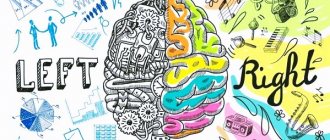The first scientist to discover that attachment to an adult who cares for him is vital for a child was the English psychiatrist and psychoanalyst John Bowlby, who became interested in ethology - the science of genetically determined behavior of animals and people. If we abstract from all the sentiments associated with parent-child love, it becomes clear that it has an important function for the survival of the species: it will be very good if the parents do not eat or at least kill their own offspring, which requires some additional efforts on the part of nature ( for example, therefore, during childbirth and during feeding, a woman’s level of oxytocin, which is responsible for emotional attachment to the child, increases).
Psychoanalysts believed that the baby maintains a relationship with its mother simply to satisfy physical needs, but Bowlby added a social component to this. Attachment to a significant adult is a testing ground on which the ability to establish social relationships is honed and the degree of basic trust in the world is determined. The child has about two years to do this - up to the age of two months, babies smile, babble and cry to attract the attention of any adult, from two to six they learn to distinguish between adults and choose the most significant among them, and after six months a stable attachment begins to form . Since the baby, purely technically, cannot leave the relationship with his parents, he has to adapt to any attitude from an adult, including coldness, rejection or unpredictable behavior. Psychologist Mary Ainsworth, who shared Bowlby's ideas, explored how these experiences affected attachment patterns in the 1960s and 1970s. Her famous experiment was called the “Stranger Situation”: first, infants and their mothers were observed at home, assessing how the mother responded to various “call signs” from the child. At the age of one to one and a half years, children with their mothers were invited to a specially equipped laboratory, where different situations were simulated: the presence of the mother and separation from her, as well as the appearance of a stranger. The researchers were interested in how much the child would be disturbed by the absence of his mother, how boldly he would be ready to explore a new situation, how he would react to a stranger and the subsequent return of the mother. As a result, Ainsworth identified four main types of attachment:
- Reliable. Such children are confident that their mother can satisfy their needs, and they reach out to her for help when faced with something unpleasant. At the same time, they feel protected enough to explore the environment, realizing that adults will certainly come to the rescue in case of danger. In the future, such a child will value love and trust, but at the same time remain quite independent and self-confident.
- Anxiety-resistant. It is formed when the child is not sure that the mother or other significant adult will be there when he is needed. Therefore, such children react sharply to separation, are wary of strangers and are not very ready to act independently because they do not feel completely safe. It is interesting that such a child develops an ambiguous reaction to the return of his mother: he is both happy about this return and angry that he was abandoned. Such children grow up unsure of themselves and in their relationships with other people; they often need confirmation of reciprocity too much.
- Anxious-avoidant. These are the most independent children who are not particularly upset by the absence of their mother. Such infants early encountered coldness or rejection from their caring adults. Unlike the previous type, here the child does not have an excessive need for attention and care - on the contrary, he stops waiting for it. These children learn that the need for intimacy leads to disappointment, and they try to do without it in the future.
- Disorganized. Such children demonstrate contradictory behavior; they are sometimes drawn to adults, sometimes they are afraid, sometimes they rebel. As a rule, this style of behavior is associated with serious psychological trauma.
Authors of the concept
First of all, it is worth mentioning the names of scientists who made the most significant contribution to attachment theory.
Conrad Lawrence, based on a study of the instinctive behavior of animals, described the phenomenon of imprinting: “Whoever the baby saw first from the moment of birth is his mother!” The relentless pursuit of duckling after duck is an instinctive program for the survival of the species. Adult animals also have an instinctive program: “If you see a little one, feed and warm it!” There are cases when this care program extends to cubs of another species. According to legend, the Capitoline she-wolf fed Romulus and Remus.
Donald Winicotte invented the concept of the “good enough mother.” Such a mother is physically and psychologically available, emotionally friendly and stable, and provides the baby with the resources necessary for survival (care, feeding, communication, care, and much more).
John Bowlby believed that attachment —a child's emotional connection with a significant adult—is key to a child's survival, safety, comfort, and development. It is important for a child that his mother or another adult is nearby and is ready not only to take care of him, but also to emotionally support him. Attachment is a kind of child’s knowledge that an adult is reliable and provides support for subsequent knowledge of the world.
Winicott, Bowlby, and Ainsworth, based on numerous observations and studies, described different styles of attachment of a child to his mother.
What's next?
As American studies (for example, this one) show, these early types of attachment influence the formation of relationships with peers. If nothing happens to the child that breaks the established pattern, these behavior patterns are reinforced. In the 1980s, scientists Sidney Hazan and Philip Shaver went even further and extended attachment theory to adult romantic relationships - based on the logic that a harmonious relationship in a couple, like a child's relationship with a significant adult, is a secure base that helps cope with environmental challenges. In adults, four types of attachment were also identified, corresponding to children's models from Mary Ainsworth's classification.
Adults with secure attachment styles are more likely than others to have healthy, balanced romantic relationships. They are able to highly value both themselves and the other person, form strong bonds, but remain self-sufficient and do not become dependent on their partner.
Anxious people underestimate themselves and overestimate their partners; they are often prone to codependent relationships and constantly seek confirmation of their own importance. Unfortunately, this style of relationship building is to some extent encouraged by culture: we often romanticize all-consuming, sacrificial love that places the object of affection at the center of the universe. From the point of view of psychologists, such “relationship-centric” behavior is a sign of pathology, and the object of suffocating love itself is often not delighted with the fact that he has become someone’s Vronsky or Beatrice.
Avoidant-rejectors are the opposite of the previous ones: they consider themselves self-sufficient and ideally would like complete immunity from feelings. Such people are unconsciously afraid of vulnerability and rejection, so they either keep their distance all the time, or, if they have already gotten along with someone, they often break off the relationship “preemptively” for fear of being abandoned. With this type of attachment, there is a strong temptation to think of oneself as simply a “strong and independent” person, without realizing that the ability to take risks and open up to others is just as important to a strong personality as the ability to be independent.
Anxious-avoidant people are torn apart by constant contradictions: they both want intimacy and are afraid of it.
Dynamics of attachment development
Since the time of psychoanalysis, human development has been viewed as a movement from the state of a passive object of other people's desires to the state of an active subject capable of realizing his own desires. From helplessness and total dependence to the state of being the creator of your own life.
Many consider complete separation from parents and guardians, autonomy and independence to be one of the criteria for maturity and mental health of an individual. And such a phenomenon as attachment is attributed more likely to the period of childhood. A child cannot develop without emotional attachment to his parents; he needs it like air. But an adult can do without attachment, he is not a child, he must be independent and independent.
In fact, the need for affection develops along with a person. A newborn baby needs one form of attachment to survive (regular care, feeding, warmth, security and much more), but an adult needs a completely different attachment.
Comfortable contact with your immediate environment is also vital for an adult. Only this is no longer a one-sided consumption of parental care, like a child, but mutually beneficial cooperation and the exchange of various types of mutual support of people of equal status.
Remember yourself as a child. Year by year you became more and more independent, but your need for contact with an adult remained.
The situation changes a lot over time. Mom was young and big, but she became old and weak. The child was small and weak, but became big and independent. But the attachment remains. Only this attachment is filled with a completely different content.
If parents and the child manage to adapt to each other, maintain respect and flexibility instead of isolation and disunity (“I don’t care what happens to you!”), a new quality of attachment will grow.
Agree, with age, a child’s needs change significantly: at first he needed mother’s milk, warmth and care, and then he has to learn important skills: from the ability to tie shoelaces to the ability to maintain comfortable relationships with others.
In the end, an important adult provides moral guidance for the child, shows what is right and wrong. “The little son came to his father, and the little one asked what is good and what is bad!” The resources of an adult that can be transferred to a child are inexhaustible. A child’s attachment to an adult does not disappear; it can change significantly.
In other words, the separation does not have to be completed at all. In people who have become adults, relationships with parents can develop into relationships of cooperation, friendship and mutual assistance. Once a child has grown up and reached the level of an adult who is able to earn money on his own, make important decisions himself, be an expert and creator of his own life, he still needs the support of his parents. But completely different. It is important for him to receive recognition and respect from his parents, to receive confirmation that he is a full-fledged respected person.
Is it possible to change the type of attachment?
Scientists from the University of Kansas suggest that genetic factors may also play a role in the formation of attachment: some variations in the genes encoding dopamine and serotonin receptors may contribute to the formation of anxious and anxious-avoidant types of attachment. But at the moment this is just a guess.
Long-term American studies have shown that in 70–80% of the population, the type of attachment does not change much over time. This means that the patterns of relationships ingrained in us in childhood are indeed very stable. On the other hand, a certain percentage of people can still change their approach to relationships, which means that the type of attachment is only a persistent habit, but not an integral part of the personality, and something can be done about it. Some types of psychotherapy have been developed specifically to solve such problems - longer-term “attachment-based therapy,” which evolved from psychoanalysis, and shorter-term emotionally focused therapy, which is a mix of Gestalt, person-focused, and other methods. types of therapy.
How to Raise Secure Attachment in Children
One way to foster secure attachment in children is to give them the opportunity to be independent and do things on their own. Naturally, these activities should be age appropriate. This could be as simple as letting your child ride their bike in the neighborhood when they are old enough to do it themselves. This builds a sense of confidence and independence, and they know their parents will be there when they return home.
Another important aspect of secure attachment is trusting your children to do the right thing, whatever that means for the situation. When you allow your child to go out with friends, give him a reasonable amount of time to get home and trust that he will listen to the rules.
What is attachment and how is it formed?
Attachment theory, developed by the American psychologist J. Bowlby, has become widely known throughout the world. Attachment in this concept means the close bond formed between mother and child in the first years of his life. The origin of this connection is based on instincts. Feeling helpless and defenseless, the child, with the help of emotional reactions, unconsciously strives to “tie” his mother to himself so that she will take care of him and ensure his safety.
The formation of attachment occurs in several stages:
- 0-3 months. Perception of care from any adult.
- 3-6 months. Positive reaction to familiar faces. Smile and move in response to the actions of a close adult.
- 6 months – 2 years. Exploration of the surrounding world with the support of the mother or a substitute adult.
- 2 – 3 years. Formation of a stable form of relationship between child and mother. An adult serves as a guarantor of reliability and peace of mind for the child.
According to John Bowlby, it is very important that before the age of 3 a child develops a healthy attachment to his mother or another close adult, since his ability to build trusting relationships in the future directly depends on this.
A healthy attachment that has been formed gives the child a feeling of security and the opportunity to explore the world around him, so large and full of surprises. A baby who trusts a loved one behaves bolder and more confident. If the adult is not responsive enough and there is not enough warmth in the relationship between mother and child, then this increases the baby’s anxiety. Unfortunately, healthy attachment is not always formed, and children may experience various attachment disorders.
conclusions
Attachment development occurs early in life but has an impact throughout a person's life. In order for a child to develop harmoniously in the future, love himself and be happy in relationships with other people, it is important to form his basic trust in the world. Caring for the baby, responsiveness and emotional participation in the life of the baby, forms a reliable attachment to a loved one. This is the basis for strong and trusting relationships in the future.
Recommended books
Today, there are a huge number of books, articles, essays that you can read and draw certain conclusions for yourself. Some of the most popular books on attachment theory can be found below:
- Appendix: "The New Science of Adult Attachment and How It Can Help You Find and Keep Love" by Amir Levin and Rachel Heller.
- Attachment in psychotherapy by David J. Wallin.
- "Handbook of Applications: Theory, Research, and Clinical Applications" (3rd edition) by Jude Cassidy and Philip R. Shaver.
- Attachment Theories: An Introduction to Bowlby, Ainsworth, Gerber, Braselton, Kennell, and Klaus by Carol Garhart Mooney.
- Insecurities in Love: How Anxious Attachment Can Make You Feel Jealous, Needy, and Worried and What You Can Do About It by Leslie Becker-Phelps.
This part was about attachment theory, a theory developed by John Bowlby in the 1950s and expanded upon by Mary Ainsworth
and by countless other researchers in subsequent years. The theory helps explain how our childhood relationships with our caregivers can have a profound impact on our relationships with other adults.
Important!
Although attachment theory cannot explain every personality trait, it lays the foundation for a deep understanding of yourself and others when it comes to connecting and interacting with others.
What do you think about attachment theory? Do you think there are attachment styles that are not covered by the four categories? Are there any other criticisms of attachment theory that you think are valid and worth discussing? We'd love to hear your thoughts in the comments section.
If you find an error, please select a piece of text and press Ctrl+Enter.
Attachment theory in grief and trauma
Attachment theory also has applications in understanding grief and the trauma associated with loss.
While you may be most familiar with Kübler-Ross's five stages of grief, they were preceded by Bowlby's four stages. During Bowlby's work on attachment, he and his colleague Colin Murray Parkes observed four stages of grief:
- Shock and numbness.
During this initial stage, the bereaved may feel that the loss is not real or that it simply cannot be accepted. He or she may experience physical distress and be unable to understand and communicate his or her emotions. - Longing and search.
At this stage, the griever is very aware of the emptiness in their life and may try to fill that emptiness with something or someone else. He or she still has strong identification and may be preoccupied with the deceased. - Despair and disorganization.
Mourners now accept that things have changed and cannot go back to the way they were before. He or she may also experience despair, hopelessness and anger, as well as questions and an intense focus on understanding the situation. He or she may withdraw from others at this stage. - Reorganization and restoration.
At the final stage, faith in life may begin to return. He or she will begin to rebuild and establish new goals, new patterns and new habits in life. The mourner will begin to trust again, and the grief will subside.
Of course, attachment style will also influence how grief is experienced. For example, someone who is secure may move through the stages quite quickly or skip some altogether, while someone who is anxious or avoidant may get stuck in one of the stages.
Important!
We all experience grief differently, but viewing the experience through the lens of attachment theory can bring new perspective and insight into our unique grieving processes and why
some of us get “stuck” after a loss
.
Research
There have been several pioneering studies that have contributed to the development of attachment theory and provided evidence for its validity, including the study described earlier in which infants were separated from their primary caregivers and their behavior was noted to fall within an attachment "style" .
Pictured is
Harry Harlow
Harlow's experiments
In the 1950s, Harry Harlow conducted experiments on love and relationships between parents and children. His work showed that maternal love was emotional rather than physiological, and that the capacity for attachment was strongly influenced by experiences in early childhood
, and that this ability is unlikely to change much once it is "established".
Harlow discovered these interesting results by conducting two innovative experiments.
In the first experiment, Harlow separated baby monkeys from their mothers a few hours after birth. Instead, each monkey was raised by two surrogate "mothers". Both provided the monkeys with the milk they needed to survive, but one was made of chicken wire and the other was made of wire mesh covered with soft terry cloth
.
Monkeys that were given the freedom to choose which mother to associate with almost always chose to take milk from the terry cloth.
For the second experiment, Harlow changed his original setup. The monkeys were given either a bare wire surrogate mother or a terry cloth mother, both of which provided the milk needed to raise the monkeys
.
Both groups of monkeys survived and thrived physically, but they had very different behavioral tendencies. Those with terry cloth mothers returned to the surrogate when given strange, loud objects, while those with chicken wire mothers threw themselves to the floor, grabbed, rocked back and forth, or even “screamed in terror.” "
This provided a clear indication that the emotional attachment received from cuddling in infancy influenced the monkey's later stress responses and emotion regulation.
Important!
These two experiments laid the foundation for further work on attachment in children and the impact of attachment experiences later in life.
Pictured: Erika Erikson










